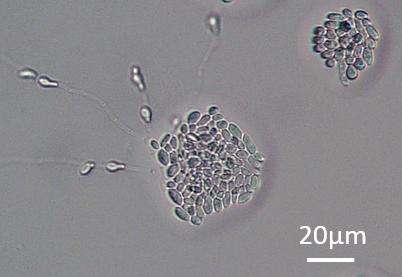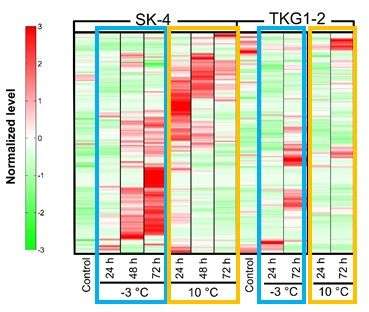Antarctic yeast's strategies: Consuming energy to prevent from intracellular freezing

Fungi that inhabit Antarctica can grow even at subzero temperatures. These fungi act as decomposers and play a significant role in the nutrients cycle in polar-region ecosystems. Yet, the metabolic response of such fungi to the cold stress of subzero temperature conditions is not entirely clear.
Dr. Masaharu Tsuji (National Institute of Polar Research, Japan) is shedding new light on cellular mechanisms of life in extreme polar environments.
Studying two strains of the Antarctic basidiomycetous yeast Mrakia blollopis with different growth characteristics under low temperature conditions to measure metabolic responses to subzero temperature conditions, he found that strain SK-4, which is well-adapted to subzero conditions, showed active metabolic pathways such as cell division and cell wall synthesis. He also discovered that SK-4 accumulated high levels aromatic amino acids including tryptophan. Aromatic amino acids are known to improve cell growth at low temperatures and among the most costly compounds for the cell to synthesize in terms of ATP requirement. Strain TKG1-2 however, which did not grow efficiently at subzero temperatures, showed no clear changes in metabolic response nor any distinctive accumulation of metabolites induced by cold stress.
His findings suggest that Mrakia blollopis consumes large amounts of energy during growth to help it cope with cold stress as it grows in subzero temperatures.
He says, "ATP is an energy source for organisms. It appears that microbial Antarctic yeast cells prevent from intracellular freezing by sacrificing this vital energy resource" and adds that "I will be looking at a wider variety of Antarctic fungi to determine whether cold stress induces changes in metabolism and gene expression."

More information: Masaharu Tsuji, Cold-stress responses in the Antarctic basidiomycetous yeast, Royal Society Open Science (2016). DOI: 10.1098/rsos.160106
Journal information: Royal Society Open Science
Provided by Research Organization of Information and Systems




















